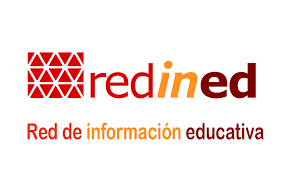El aprendizaje colaborativo y su desarrollo a través de mapas mentales. Una innovación educativa en la formación inicial docente
Resumen
Los mapas mentales constituyen una estrategia de aprendizaje que contribuye al desarrollo integral del alumnado a través de la utilización de todo el cerebro en el procesamiento de la información. Las metodologías aplicables a los mapas mentales son muy diversas, pudiéndose abordar desde una vertiente tanto individual como grupal. En este estudio, nos centramos en la utilización del mapa mental a través de un aprendizaje colaborativo, mediante la puesta en marcha de dinámicas grupales con las que se pretenden reflejar el pensamiento de todos los componentes del grupo y potenciar el desarrollo de relaciones interpersonales positivas entre los mismos. La investigación la abordamos desde una metodología cuantitativa, a través del uso de un cuestionario de 11 items, tipo Likert, con una escala que comprende los valores 1 (Nada) y 4 (Mucho) sobre la experiencia de aprendizaje vivida con mapas mentales. Se ha trabajado con una muestra de 140 estudiantes pertenecientes al Primer Curso de la titulación de Grado de Maestro especialidad en Educación Primaria, durante el curso académico 2011/2012. Los resultados obtenidos muestran que la interacción entre los componentes del grupo, así como los grupos entre sí, a través del empleo del mapa mental como recurso que refleja el pensamiento, mejora del clima positivo de aula y permite el logro de la comprensión, organización y memorización comprensiva de los contenidos trabajados con relativa facilidad. Por consiguiente, son considerados como una herramienta que puede resultar de gran utilidad en su labor como futuros docentes.Descargas
-
Resumen2786
-
PDF1555
Las obras que se publican en esta revista están sujetas a los siguientes términos:
1. El Servicio de Publicaciones de la Universidad de Murcia (la editorial) conserva los derechos patrimoniales (copyright) de las obras publicadas, y favorece y permite la reutilización de las mismas bajo la licencia de uso indicada en el punto 2.
2. Las obras se publican en la edición electrónica de la revista bajo una licencia Creative Commons Reconocimiento-NoComercial-SinObraDerivada 4.0 Internacional (texto legal). Se pueden copiar, usar, difundir, transmitir y exponer públicamente, siempre que: i) se cite la autoría y la fuente original de su publicación (revista, editorial y URL de la obra); ii) no se usen para fines comerciales; iii) se mencione la existencia y especificaciones de esta licencia de uso.
3. Condiciones de auto-archivo. Se permite y se anima a los autores a difundir electrónicamente las versiones pre-print (versión antes de ser evaluada) y/o post-print (versión evaluada y aceptada para su publicación) de sus obras antes de su publicación, ya que favorece su circulación y difusión más temprana y con ello un posible aumento en su citación y alcance entre la comunidad académica. Color RoMEO: verde.









